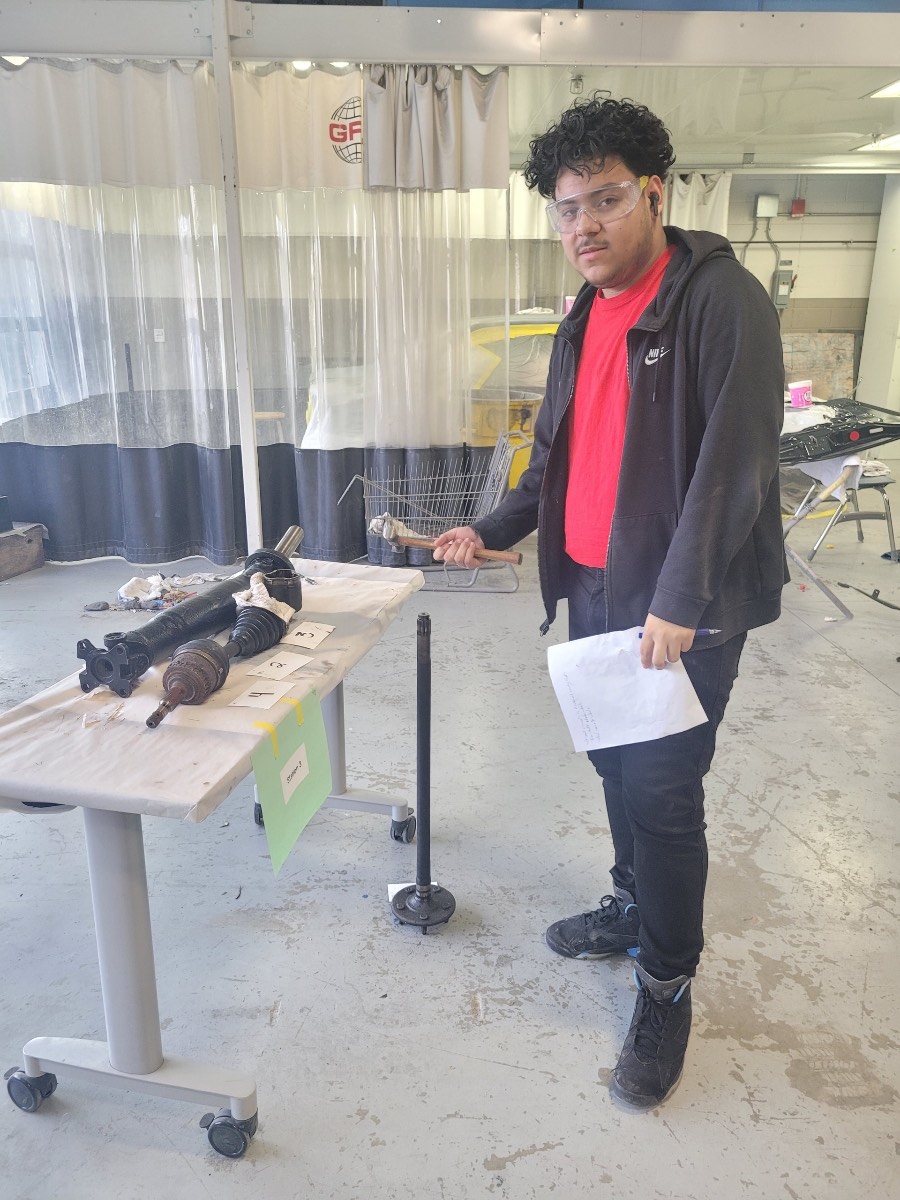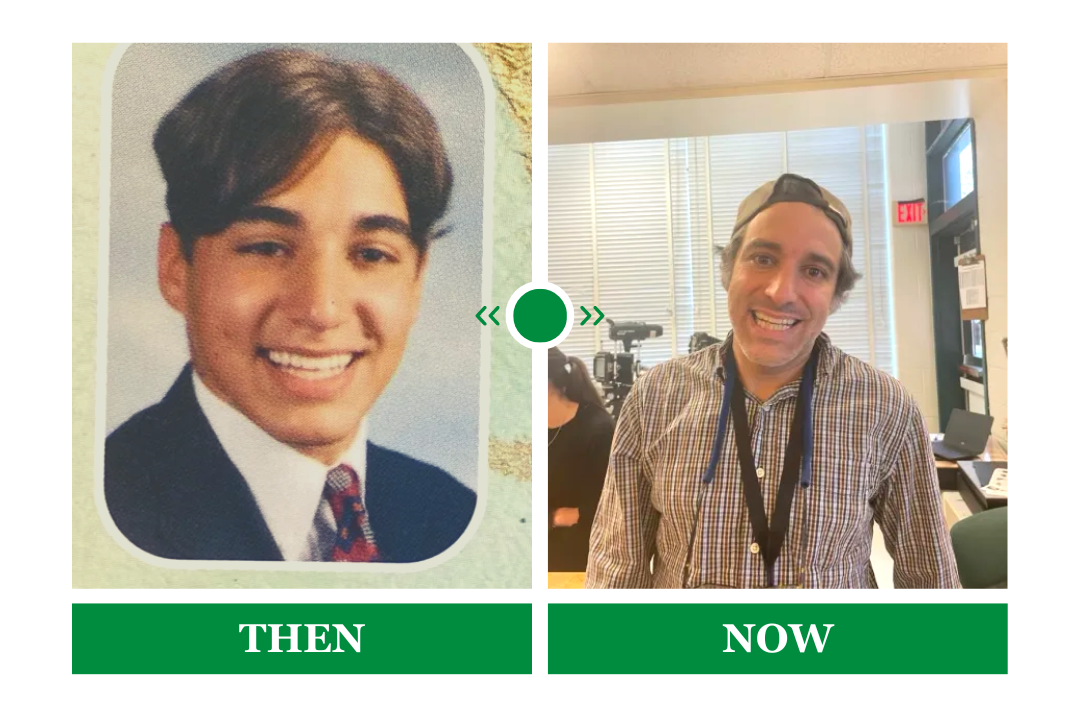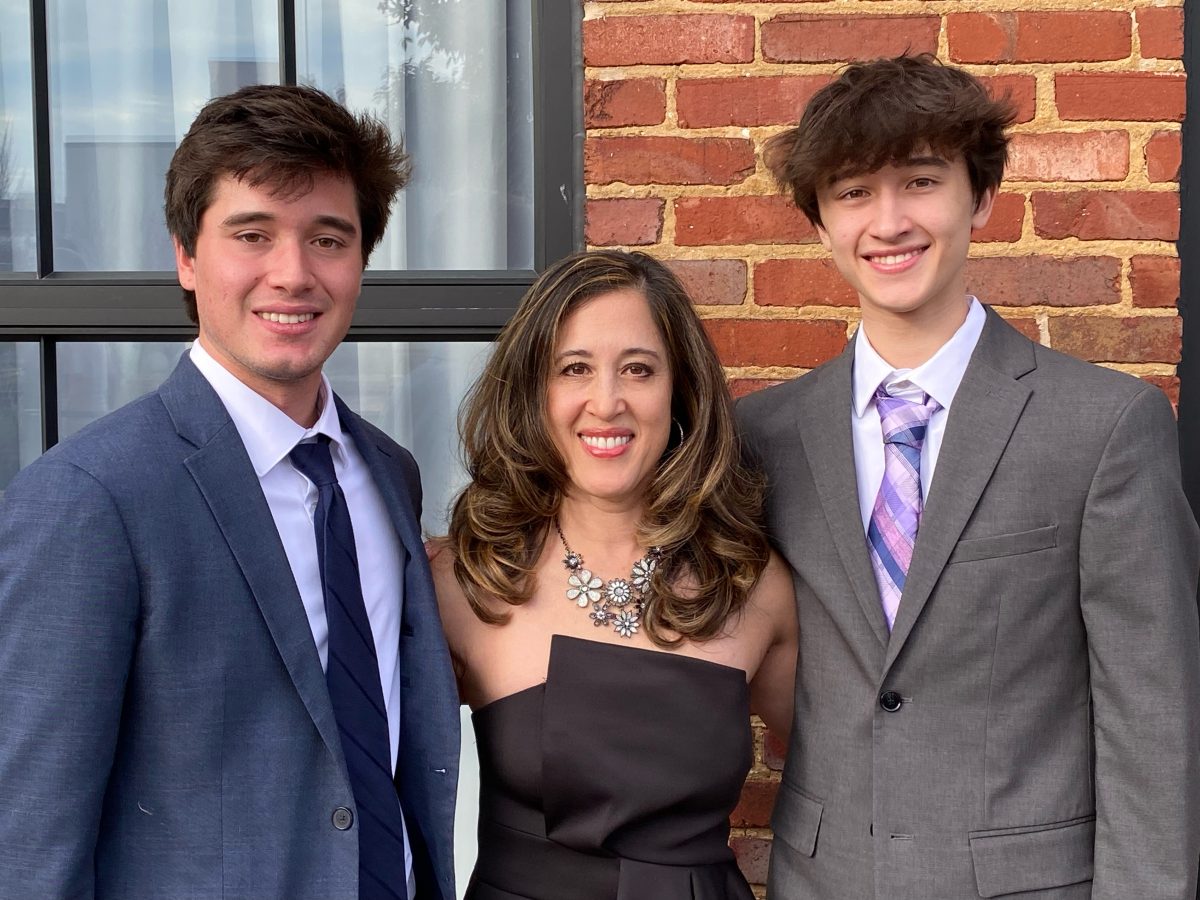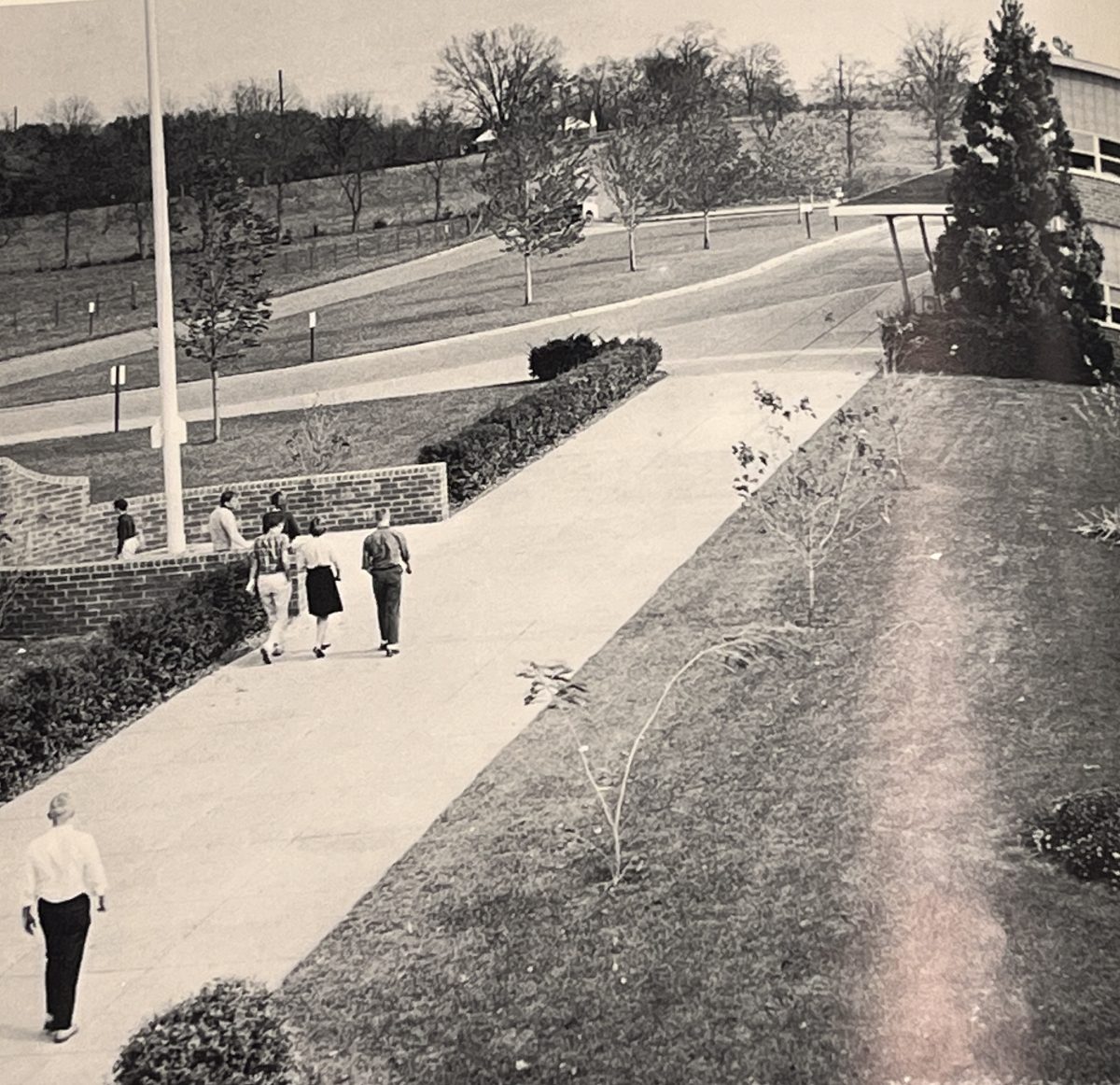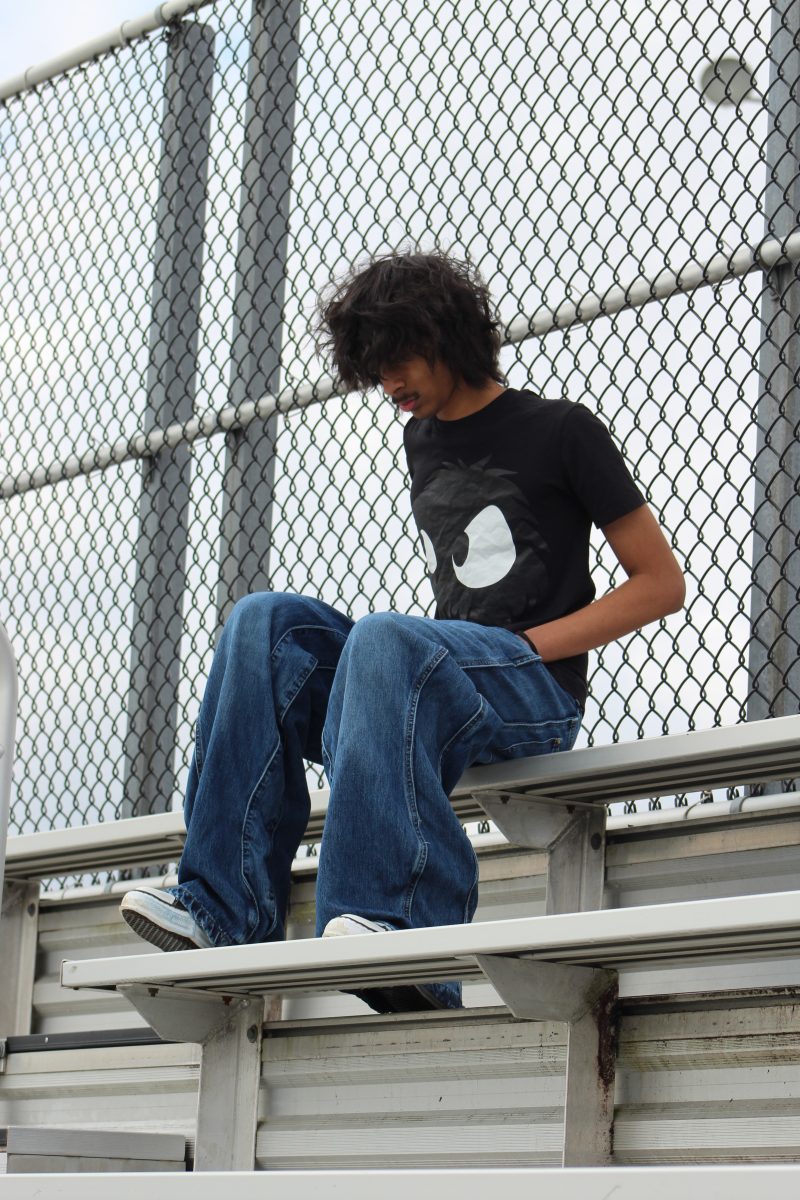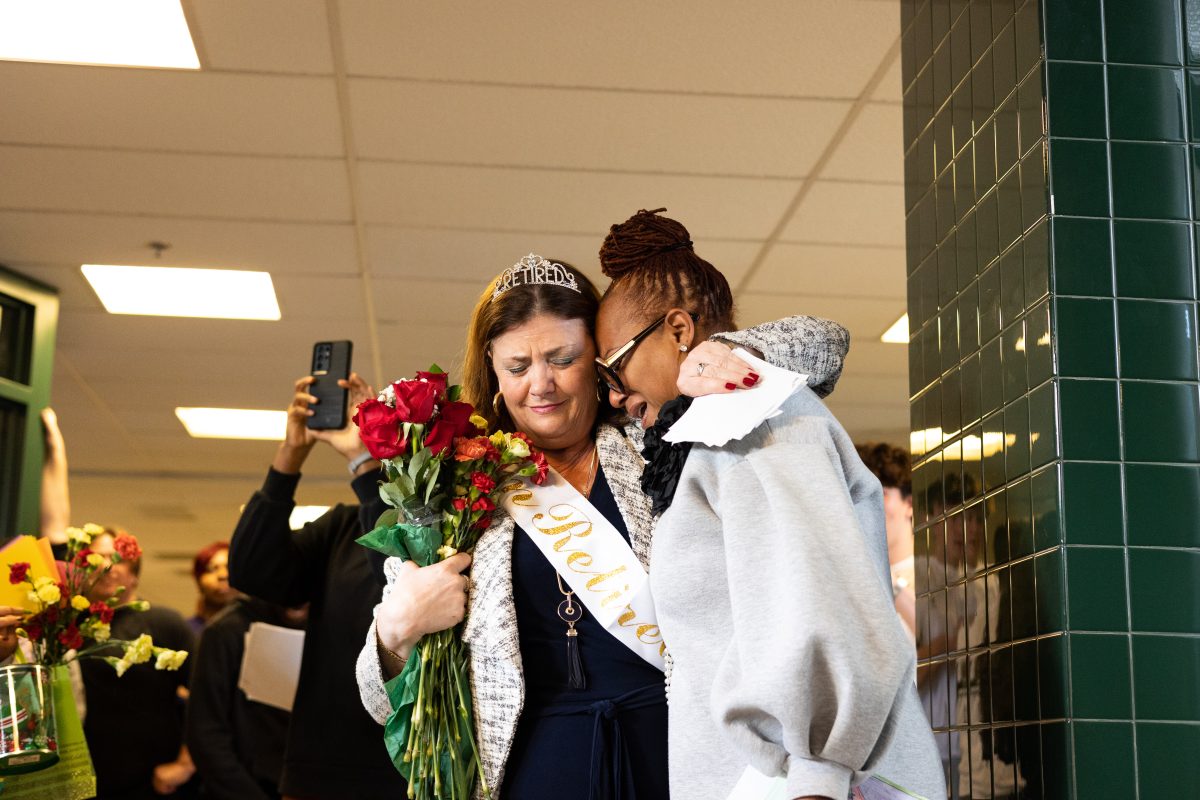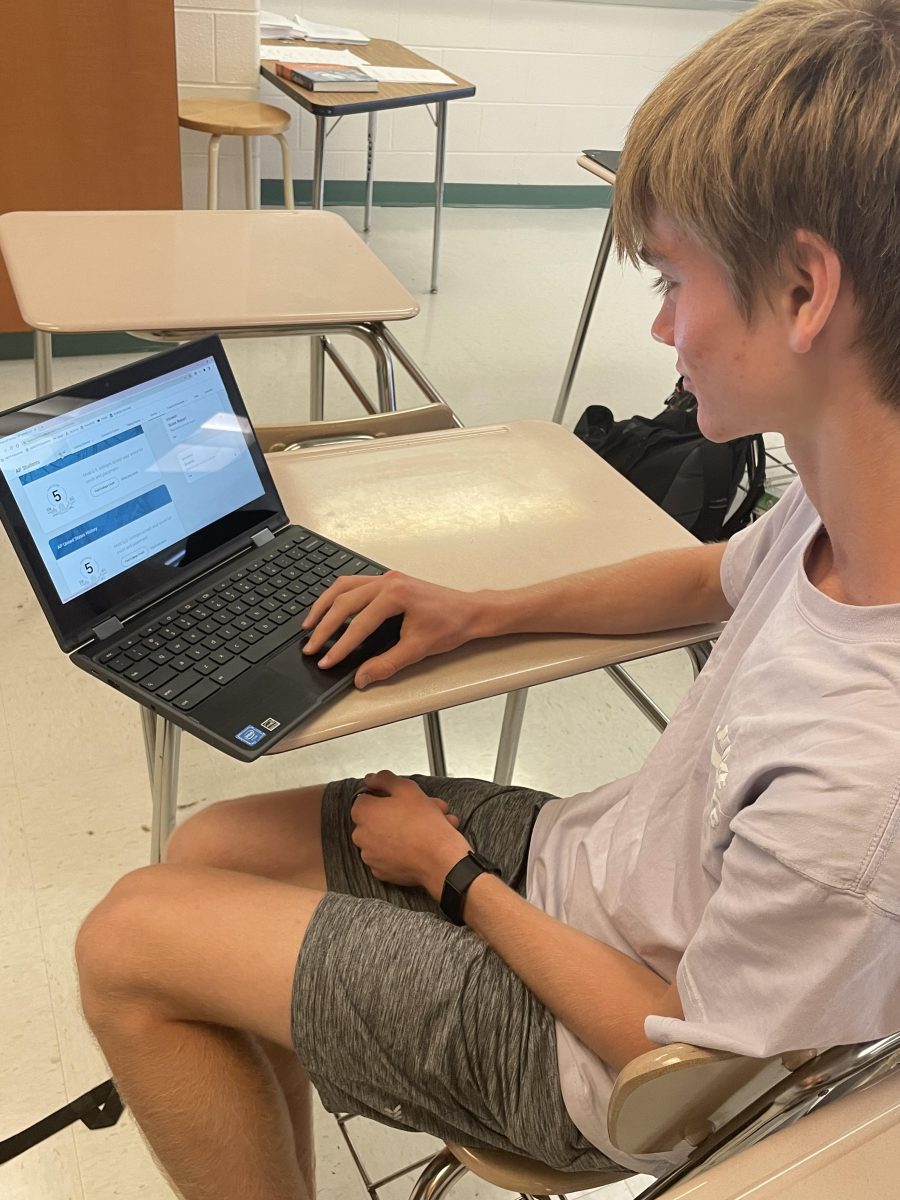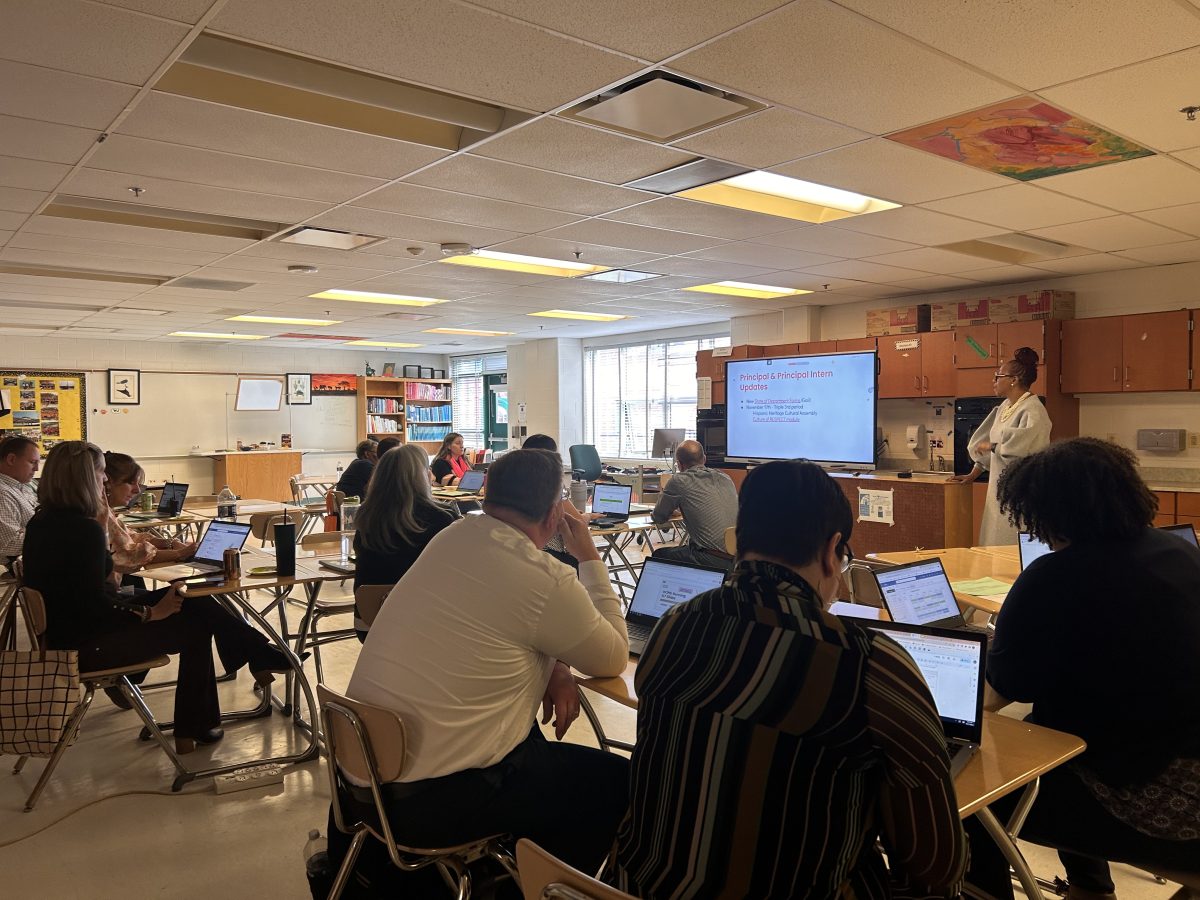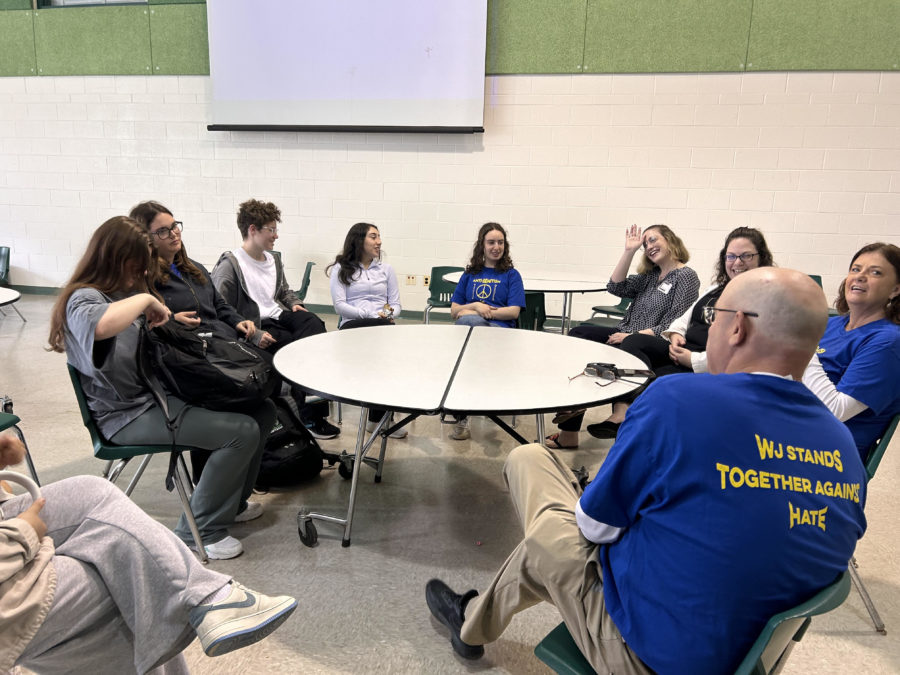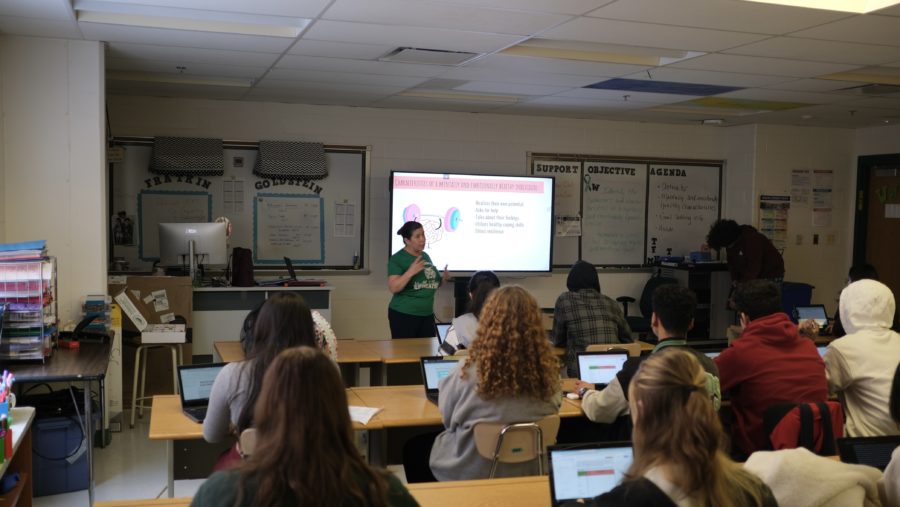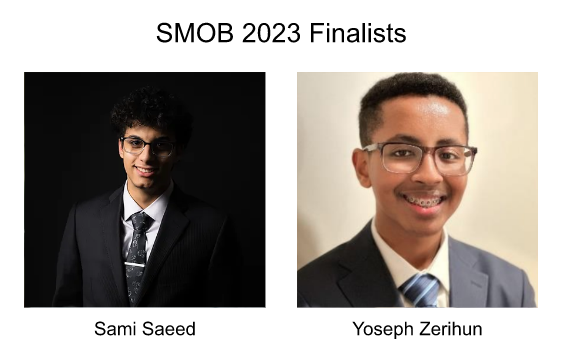High school, with its constant testing, rigid scheduling and peer pressure, is a challenge for everyone. For students with disabilities, it can be even harder.
That’s why the novels in Christine McArdle’s classroom are different from the books found in other classrooms. Her tenth grade English students, who are members of the Learning for Independence (LFI) program, read standards like The Odyssey, Frankenstein and Alice in Wonderland, but the versions they read are graphic novels with vivid illustrations. The books feature the same plot and characters as traditional editions, but they use color and artwork to enliven the stories.
“Every year we read an adapted grade ten curriculum book, and graphic novels help improve comprehension,” said McArdle.
Visual learning is equally important for students in math teacher Trish Cooper’s classes. When demonstrating math problems on her Promethean Board, Cooper uses a different color for each step to help her students differentiate them.
“Multi-sensory teaching is really beneficial, and the Promethean board makes that really easy,” said Cooper, who teaches both special ed and general ed students.
With a total of 275 special ed students in seven separate special ed programs, WJ has the largest special ed program of any school in MCPS.
“Our programs kept being added on to,” said Academic Support Center coordinator Rachel Wills, who is in charge of WJ’s special ed programs. “We’ve been doing it longer, so we know what we’re doing.”
The seven programs have different structures to address the specific needs of various students. There are self-contained classes, which have approximately 10 to 15 special para-educator; co-taught classes, or classes taught by two teachers with a mix of general ed and special ed students; and supported classes, which are taught by a teacher and a para-educator and have general ed and special ed students. Many special ed students take a combination of these types of classes as well as general ed classes that have no additional support.
Most students are identified as having disabilities in elementary school, between second and fifth grades. However, some students are not identified as having disabilities until high school.
“We don’t want to give accommodations to kids who don’t need them,” said Wills. “But if the disability is significant enough then they’ll have different services.”
Once a student is identified as having a learning disability, he or she receives an Individualized Education Plan (IEP) that includes the accommodations that he or she needs for support. Accommodations include having more time to complete tests, receiving formula sheets or having questions read aloud.
Special Ed Versus General Ed Curriculum
While MCPS has a standardized curriculum for general ed classes, the county does not write a modified curriculum for special ed classes. Instead, special ed teachers teach the basic elements of the county curriculum, but they go more slowly and do not delve as deeply into the material as general ed teachers do.
“We teach what they really need to know and forget the fluff,” said Jacqueline Robbins, who teaches biology and matter and energy to general ed and special ed students.
The classrooms in which Robbins and Cooper teach are smaller than standard classrooms, a design feature built in during WJ’s modernization.
“It creates better proximity, and it’s easier to keep students on task [in smaller classrooms],” said Cooper.
Special ed teachers normally assign less homework than general ed teachers. Homework is often more challenging for special ed students than classwork because no teacher is available to help them if they get confused. Distractions can also impede homework completion.
Most special ed students at WJ are able to graduate in the standard four years, but some take five years to finish. Depending on their program, special ed students can stay in high school until they are 21.
Nevertheless, special ed and general ed classes have many similarities. All class periods are the same length and all special ed students who receive a diploma must pass the same county final exams and HSAs as are required for general ed students.
“Teachers have been pushing for modified exams to be given to special ed students for years,” said Robbins. “It’s very frustrating.”
Although the actual exams are the same for all students, special ed students can receive accommodations while taking them.
The grading system is also identical for all classes.
“We’re not allowed to grade any differently, but we might give students more attempts to learn the material being tested,” said Robbins. “If a kid doesn’t get it we find ways to re-teach.”
Test-taking is often one of the hardest aspects for special ed students because the test formats are so rigid.
“Maybe it’s hard for special ed kids to get their ideas down on paper or write an essay, but they could tell you the information,” said Wills. “Being able to show what they actually know is hard sometimes.”
Best Buddies and Interaction Among Students
Just as WJ tries to integrate general ed and special ed students academically, many students also reach out to one another socially.
WJ’s Best Buddies club is a chapter of an international organization which fosters connections among general ed and special ed students. Members of the club include special ed and general ed students, and the club creates pairs of one each. During the year, the buddy pairs make weekly contact with each other. Typical activities include talking at school, eating lunch together or going to the movies. Members also attend monthly club meetings.
“I like how the club promotes the idea that [special ed students] are just like us,” said senior Annie Zisk, who is president of Best Buddies. “There’s nothing wrong with them.”
McArdle said that most of her students are members of Best Buddies and love how the club allows them to meet new people and make new friends. Zisk said that she appreciates how the club does not distinguish among members with disabilities and those without. She said the friendships she has made and the perspectives she has gained through Best Buddies are her favorite elements of the club.
“Special ed kids have a whole different view on the world,” said Zisk. “They have their own part in the WJ community, which is awesome. They’re great people, and I have friends [through Best Buddies] that I wouldn’t have necessarily made otherwise.”
Perceptions of Students
In general, special ed teachers and Best Buddies members agree that WJ is an accepting place for people of all abilities. However, that does not mean that problems never arise, especially when teachers and students have to deal with unfamiliar situations.
“There are some teachers who think special ed students can’t do as well, and that’s not true,” said Cooper. “Some teachers don’t understand why certain students need accommodations. Sometimes there’s a problem with understanding how the disability affects them and how the accommodations help them.”
Cooper said that although some people see accommodations as giving special ed students an unfair advantage, in reality they are only used to help level the playing field.
Other special ed teachers commented that some general ed teachers, seem to think that special ed operate on a lower level than general ed teachers.
“There’s a vibe among general ed teachers that special ed teachers aren’t as smart or as good with the material as regular ed teachers are,” said Robbins.
But Robbins, Cooper and McArdle agree that teaching special ed students is often more rewarding than teaching students in general ed.
“To see a kid who has struggled to learn the material finally understand it is very rewarding,” said Robbins. “When they finally have an ‘a-ha moment,’ your heart kind of leaps for them. I would much rather teach special ed kids. Special ed kids are more grateful and appreciative for what they learn than general ed kids are.”
Robbins, however, believes that the challenges faced by special ed students are similar to those faced by all students.
“Everybody has strengths and weaknesses,” said Robbins. “It’s my job to help find the strengths of students. My goal is to always tell special ed kids that they learn differently, so they just need to learn coping strategies.”
While others might see students with special needs as different from general ed students, Cooper believes that most special ed students do not share that viewpoint.
“They don’t want to be seen as different,” said Cooper. “Most of them do not [see themselves as different], which says something about their self-worth.”
Overall, perhaps the differences between special ed students and general ed students are not as important as their similarities.
“You never know who is disabled in high school because everyone is different,” said Robbins. “I don’t always see the difference between special ed and regular ed.”

